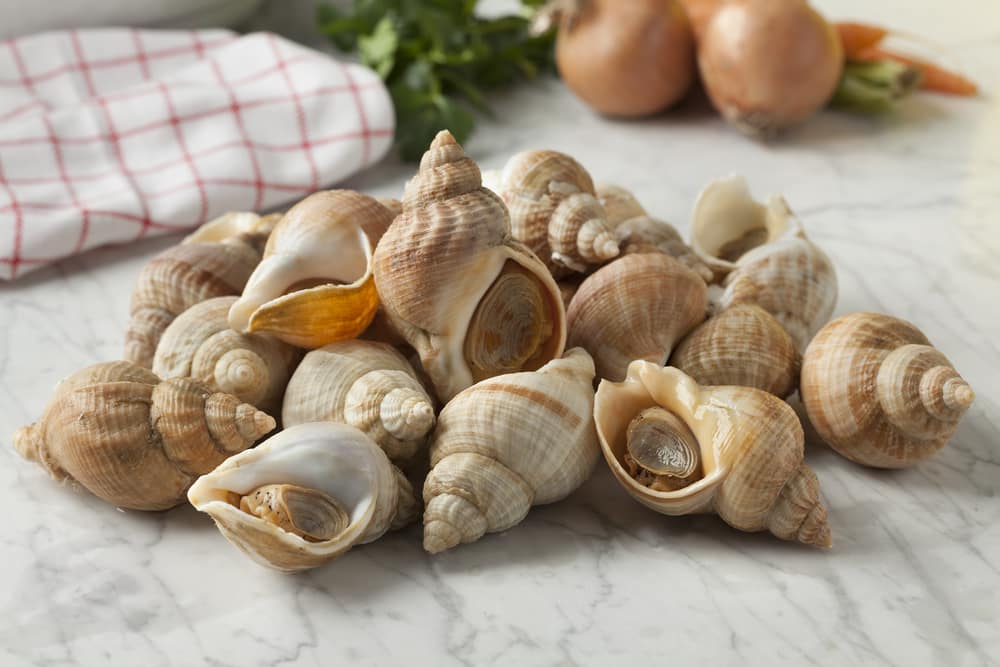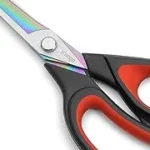Have you ever wondered why scungilli is so expensive? It’s a question that seafood lovers may find themselves asking when faced with the hefty price tag attached to this delicacy. Well, get ready to dive into the fascinating world of scungilli and uncover the reasons behind its high cost.
Scungilli, also known as conch, is a type of large sea snail that has been cherished for its tender meat in many cuisines around the world. But what makes it so pricey? The answer lies in its rarity and the intricate process involved in harvesting and preparing this delectable seafood.
You see, scungilli is not as common as other seafood options, and its availability can be limited. As a result, it requires meticulous fishing and handling techniques. From the challenging task of harvesting the snails to the time-consuming process of cleaning, tenderizing, and preparing them for consumption, every step demands skill and time. It’s no wonder that all these factors contribute to the premium price of scungilli. So, let’s dive deeper into the fascinating world of scungilli and explore why this seafood delicacy comes with a hefty price tag.

Why is Scungilli So Expensive?
Scungilli, a type of seafood commonly used in Italian cuisine, has gained a reputation for being quite expensive. But have you ever wondered why? In this article, we will delve into the reasons behind the high cost of scungilli and explore the factors that contribute to its price. From the rarity of the ingredient to the labor-intensive process of harvesting, we will uncover the secrets behind the expensive delicacy known as scungilli.
The Rarity of Scungilli
Scungilli, also known as conch, is a type of sea snail that is native to the waters around Italy and other Mediterranean countries. Its scarcity in these regions contributes to its high price. Unlike other seafood varieties that can be readily farmed or caught in large quantities, scungilli requires specific conditions and habitats to thrive. This, combined with the fact that it is often harvested by hand, leads to a limited supply of scungilli in the market.
Due to its rarity, scungilli is often considered a delicacy and is in high demand among seafood enthusiasts and Italian cuisine lovers. This high demand, coupled with the limited availability, further drives up the price of scungilli in the market.
Additionally, the unique taste and texture of scungilli contribute to its desirability. With a firm and chewy texture, scungilli adds a distinct flavor profile to dishes and is highly sought after by chefs and seafood connoisseurs alike.
The Labor-Intensive Harvesting Process
One of the main reasons for the steep price of scungilli is the labor-intensive process involved in its harvesting. Unlike other seafood varieties that can be easily caught using nets or fishing lines, scungilli requires a more hands-on approach. Harvesting scungilli involves divers manually collecting the sea snails from their natural habitats, often in shallow waters.
This process is not only physically demanding but also time-consuming. Divers must carefully locate and extract the scungilli from the seabed, ensuring that no damage is caused to the delicate snails. The manual labor involved in the harvesting process significantly increases the cost of scungilli, as divers need to be compensated for their specialized skills and long hours of work.
Furthermore, the challenges associated with shipping and preserving scungilli add to its cost. Since scungilli is highly perishable, it requires careful handling and temperature-controlled transportation to maintain its quality and freshness. These additional logistical considerations contribute to the overall expense of scungilli.
Sustainable Fishing Practices
As awareness of the impact of overfishing grows, sustainable fishing practices have become a priority in the seafood industry. This shift towards sustainability often involves higher costs for fishermen and seafood suppliers, and scungilli is no exception.
Many areas where scungilli is harvested have implemented regulations to protect the population of this species. Daily catch limits, seasonal closures, and size restrictions are some of the measures put in place to ensure the long-term sustainability of scungilli populations.
Compliance with these regulations requires additional monitoring, paperwork, and resources, all of which add to the cost of harvesting scungilli. By adopting sustainable fishing practices, the industry aims to preserve the future availability of scungilli while maintaining its premium status.
Scungilli as a Gourmet Ingredient
Scungilli’s elevated status as a gourmet ingredient also contributes to its high price. Its rarity and unique taste have made scungilli a sought-after delicacy in the culinary world.
Many high-end restaurants and specialty food stores include scungilli in their menus or product offerings, catering to customers who appreciate the exclusive nature of this ingredient. The demand from these establishments, coupled with the limited supply, drives up the price of scungilli even further. The perceived value and prestige associated with scungilli contribute to its premium pricing.
Furthermore, the reputation of scungilli as a luxury ingredient has created a niche market where customers are willing to pay a premium for its inclusion in their meals. This demand-driven pricing model further bolsters the high cost of scungilli.
Environmental Factors and Climate Change
The impact of climate change on marine ecosystems cannot be overlooked when discussing the cost of scungilli. Rising temperatures, ocean acidification, and changing currents can all affect the population and distribution of various marine species, including scungilli.
These environmental factors can disrupt the fragile balance required for the growth and survival of scungilli, leading to reduced populations and fewer available specimens for harvesting. As a result, the scarcity caused by these changes can drive up the price of scungilli as the market struggles to meet the demand.
Furthermore, efforts to mitigate the effects of climate change and protect marine habitats require investments in research, conservation, and sustainability initiatives. These additional expenses are often reflected in the price of scungilli and other seafood varieties.
Conclusion
Scungilli’s high price can be attributed to a combination of factors, including its rarity, the labor-intensive harvesting process, sustainable fishing practices, its gourmet status, and the impact of environmental factors and climate change. These elements contribute to the exclusivity and desirability of scungilli, making it a prized and expensive ingredient in Italian cuisine and seafood markets.
Key Takeaways – Why is Scungilli So Expensive?
- Scungilli is a type of seafood that comes from the conch shell.
- The harvesting and processing of scungilli requires specialized techniques and tools, making it labor-intensive.
- Scungilli is often considered a delicacy and is popular in Italian cuisine.
- The demand for scungilli is high, but the supply is limited, which drives up the price.
- Scungilli also has a short shelf life and requires careful handling and transportation, adding to the overall cost.
Frequently Asked Questions
Welcome to our FAQ section where we answer some common questions about scungilli and its high price tag. Scungilli, also known as conch, is a type of seafood that is renowned for its unique taste and texture. However, the high cost of scungilli often leaves people wondering why it is so expensive. We’ve put together some answers to shed light on this topic. Let’s dive in!
What factors contribute to the high price of scungilli?
Several factors contribute to the high price of scungilli. Firstly, scungilli is not as widely available as other types of seafood, making it a more exclusive and sought-after delicacy. Its limited supply drives up its price. Additionally, scungilli is labor-intensive to harvest and prepare. The process of extracting the meat from the conch shell is a tedious and time-consuming task, leading to increased labor costs. Finally, scungilli is often imported from different regions, which adds to the overall cost due to transportation and import taxes.
Moreover, the perishable nature of scungilli affects its price. The delicate nature of the meat requires careful handling, transportation, and storage, all of which incur additional expenses. Proper packaging and refrigeration are necessary to maintain the quality and freshness of the scungilli, which further drives up the cost. These various factors combined contribute to the higher price compared to other types of seafood on the market.
Are there any alternatives to scungilli that are more affordable?
Yes, there are several alternatives to scungilli that are more affordable. If you’re looking for a similar taste and texture, you might consider trying other types of shellfish, such as mussels, clams, or shrimp. These options are generally more widely available and have a lower price point. They can be used in various dishes, offering a satisfying seafood experience without the expense of scungilli.
Another option is to explore local seafood options. Depending on your location, there may be regional delicacies that are more accessible and budget-friendly. For example, if you’re by the coast, you might find locally caught fish or crabs that are both fresh and reasonably priced. Being open to alternatives and exploring local options can help you enjoy delicious seafood without breaking the bank.
Is the high price of scungilli justified by its taste and quality?
Absolutely! The high price of scungilli is often justified by its exceptional taste and quality. Scungilli has a unique flavor that is rich, savory, and slightly sweet. Its texture is firm yet tender, making it a delightful seafood experience. The limited availability and labor-intensive production process contribute to the high quality of scungilli, ensuring that you get a premium product. The effort and expertise required to harvest, clean, and prepare scungilli are reflected in its price, guaranteeing a delicious and high-quality culinary experience.
Furthermore, scungilli is versatile and can be used in various recipes, adding a touch of luxury to any dish. Its distinct taste and texture make it a popular choice among seafood enthusiasts and culinary connoisseurs. So, while scungilli may come with a higher price tag, the exceptional taste and quality it offers make it a worthwhile investment for those who appreciate fine seafood.
Can I find affordable scungilli options?
While scungilli is generally considered a premium seafood option, you may still find more affordable options. One way to explore more budget-friendly choices is to look for local markets or seafood vendors that offer scungilli at a lower price. These sources often have direct connections to fishermen or importers, allowing them to offer competitive prices to their customers.
Additionally, keep an eye out for seasonal promotions or sales at seafood markets. Prices can fluctuate based on availability and market demand, so taking advantage of special offers or discounts can help you find scungilli at a more affordable price. Lastly, consider purchasing scungilli in frozen form, as it is often more cost-effective compared to fresh scungilli. While the taste may slightly differ from fresh scungilli, it can still satisfy your cravings without breaking the bank.
Are there any ethical or sustainability concerns with scungilli?
As with any seafood, it’s important to be mindful of ethical and sustainability concerns when consuming scungilli. Due to overfishing and habitat destruction, some species of conch are at risk, leading to potential ecological imbalances. To promote sustainability, look for scungilli that is sourced from reputable, responsible, and sustainable fisheries. These sources adhere to strict fishing regulations and practices that ensure the long-term viability of the species and the marine ecosystem.
Another way to address sustainability concerns is to consume wild-caught or aquaculture-certified scungilli. These certifications provide assurance that the seafood has been produced and harvested in an environmentally responsible manner. By making informed choices and supporting sustainable practices, you can enjoy scungilli with a clear conscience, knowing that you are contributing to the conservation of marine resources.

Scungilli – an Italian American Christmas staple – has unique New Jersey history
Summary
So why is scungilli (sea snail) so expensive? Well, it’s mainly because catching scungilli is no easy task. These creatures can be found in deep waters, and fishermen have to go through a long and difficult process to catch them. As a result, the supply of scungilli is limited, driving up the price. Additionally, the preparation of scungilli involves meticulous cleaning and cooking, which further adds to its cost. So next time you see scungilli on a menu, you’ll know why it comes with a hefty price tag!
In conclusion, scungilli is expensive due to the challenges in catching and preparing it. Its limited supply and labor-intensive process contribute to its high cost. So, if you’re curious about trying this delicacy, be prepared to pay a premium price for it!






